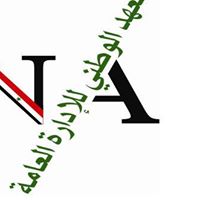Subscribe to the gold package and get unlimited access to Shamra Academy
Register a new userIsolation and Identification of Some Strains of Lactic Acid Bacteria from Raw Camel and Shami Goat Milk and Study Some of their Biochemical and Industrial Characteristics
عزل وتعريف بعض سلالات بكتريا حمض اللبن من الحليب الخام للنوق والماعز الشامي ودراسة بعض خصائصها الكيميائية الحيوية والتصنيعية
1238
0 0
0.0
(
0
)
Added by
جامعة الفرات رسالة ماجستير
Publication date
2014
fields
Agricultural Engineering
and research's language is
العربية
Created by
Shamra Editor
Ask ChatGPT about the research

أجري هذا البحث في مخابر كلية الزراعة بجامعة الفرات قسم علوم الأغذية وفي مخابر هيئة الطاقة الذرية بدمشق وقد هدف إلى عزل وتعريف بعض سلالات بكتريا حمض اللبن من الحليب الخام للنوق والماعز الشامي بالإضافة إلى دراسة بعض الخصائص الكيميائية والتصنيعية للسلالات المعزولة وذلك في عامي ( 2010و 2011)
No English abstract
References used
طيفور أنطون 1988 الألبان - الجزء النظري - مطبعة الاتحاد - جامعة دمشق
rate research
Read More
Four strains of lactic acid bacteria (LAB) from different genus، species and
sources were tested for their abilities to bind of AFM1 for 14 hours.
Lactobacillus rhamnosus LC705 showed higher ability to bind AFM1 (88.35%)،
followed by Bifidobacteri
um bifidum BG1 (84.21%), Lactobacillus bulgaricus
R21 by 80.41% and finally Streptococcus thermophilus by 71.52% after 14
hours of incubation.
This research was conducted at the Faculty of Agriculture, Department of
Food Science laboratories to isolate lactic acid bacteria from some Syrian milk
products (milk, yogurt, cheese) and determine some morphological,
physiological characteristic and the ability of these isolates to ferment sugars.
This research was conducted in the Agriculture Faculty- Food Science
Department, Damascus University, for detecting Lactic acid bacteria isolated
from Syrian dairy products (white fresh cheese-Leben), Samples were collected
from August, 2004 to Oc
tober, 2005 from different areas in Syria. Analysis was
done for 245 bacterial isolates from 40 samples of white fresh cheese and 58
samples of yogurt (curd). Results showed that the genus Enterococcus was
dominant with a percentage of 47.52%; Pediococcus had a percentage of 26.3
%; while Lactococcus had a percentage of 15.38% with only 3.2% for
Lactobacillus.
Three hundreds and thirty samples of raw milk and some of the Syrian
dairy products collected during 2002-2003 from different areas of Syria, and
were used to detect the presecne of Listeria in these products.
Results indicated that mainly L. mono
cytogenes and to a lesser degree
L.innocua and L.ivanovii were found in these products. The perecentage of
violating of the Syrian standards was 4 % in raw milk, 0.0% in pasteurized
milk, 2% in white cheese, 0.5% in shinglish and 0.0% in ice cream. And it has
been deterhmined the identity of the isolated bacterial species of Listeria from
the above-mentioned products, where L. monocytogenes was dominant, and to a
lesser estent were L. innocua and L. ivanovii.
This study was conducted at the laboratory of Food Science Department,
Agriculture College, Damascus University to isolate and characterize of
Lactobacilli bacteria from some Syrian foods and detection the effectiveness of
anti-pathogenic bacteria
l growth. Lactic acid bacteria from different dairy
products, pickles and dried plant samples were isolated and identified
according to common characteristics. Results showed that twenty-three isolates
were rods while only 2 of the them were coccid. These isolates were tested for
their antimicrobial effect against pathogenic bacteria for both gram positive
bacteria (Staphylococcus aureus) and gram negative bacteria (Klebsiella
pneumonia and Escherichia coli). Fifteen isolates demonstrated antimicrobial
effect against the three tested bacteria, of which CP50 and CP46 isolates
showed the best antimicrobial effect. Results of the standard physiological and
biochemical tests identified fourteen isolates as Lactobacillus plantarum and one
isolate as Lactobacillus fermentum.
suggested questions
Log in to be able to interact and post comments
comments
Fetching comments


Sign in to be able to follow your search criteria


